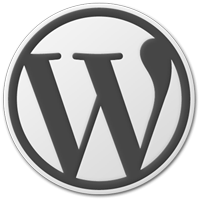 With the release of the WordPress 3.0 RC3 we are getting very close to the official roll out and launch of WordPress 3.0.
With the release of the WordPress 3.0 RC3 we are getting very close to the official roll out and launch of WordPress 3.0.
If you are currently running a WordPress site or are thinking about running a WordPress site you might be thinking, what does this mean for me?
I’ll attempt to break down the pros, cons, and features of the changes made in the WordPress 3.0
More after the break.
What’s New in WordPress?
There are tons of bug fixes, optimizations, and minor features in WordPress 3.0, but here are the 3 biggest additions (in my opinion with this new version of WordPress).
- Custom Menus – WordPress takes a big step towards becoming a more robust content management system with the addition of custom menus in WordPress 3.0. These menus allow you to customize menus with links to pages, category archives, or any custom URL and nest them accordingly from right within the admin. This is similar to other content management systems. One downside is that you might find yourself spending more time managing menu hierarchy than in the past, however you will now have far more control over menus.
- Custom Post Types – This is really more of a developer feature as it stands right now. However this can benefit you as an end user as well. Custom Post Types will allow developers to create custom post types similar to pages and posts. What does this mean? In theory it means custom post types can be created for specialized sites. Usually functionality such as this was accomplished with large numbers of custom fields which can hopefully become a thing of the past with the custom post type implementation.
- Multi Sites – If you are not aware WordPress and WordPress Multi User (MU) have been combined in this latest version of WordPress. With a simple code addition and adjustment of some settings your WordPress site can now easily become a WPMU site. For most WordPress users this is a non-issue, however for WPMU users this is a revolutionary shift in the software. Hopefully now this will standardize plugins, themes, and feature sets among the 2 WordPress branches.
Well there you have it, what I feel are the 3 biggest additions to WordPress in version 3.0. In addition to these changes there is also a new, feature rich default theme, some changes to the admin area, additional admin settings, and ton of fixes/optimizations which should make the lives of WordPress developers much easier.
All in all, WordPress made its biggest steps yet towards becoming a more robust content management system while maintaining strong ties to its blogging platform roots.

